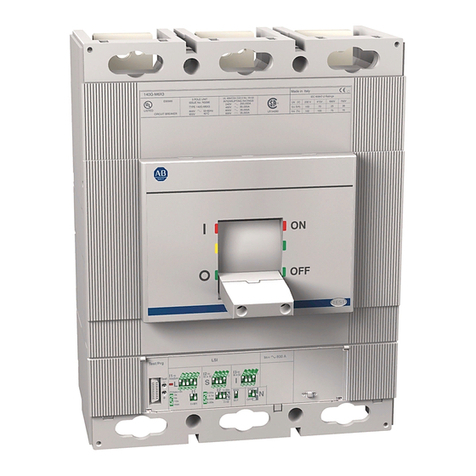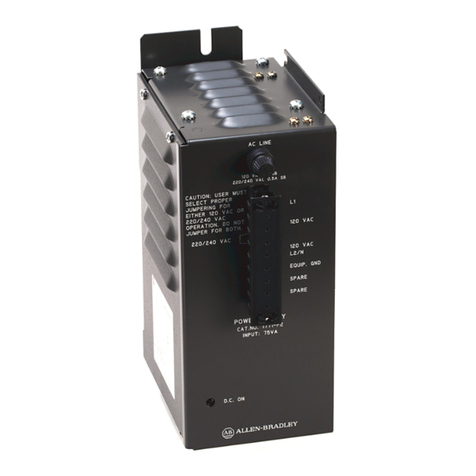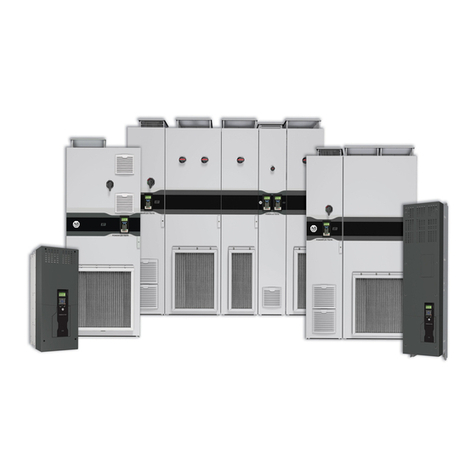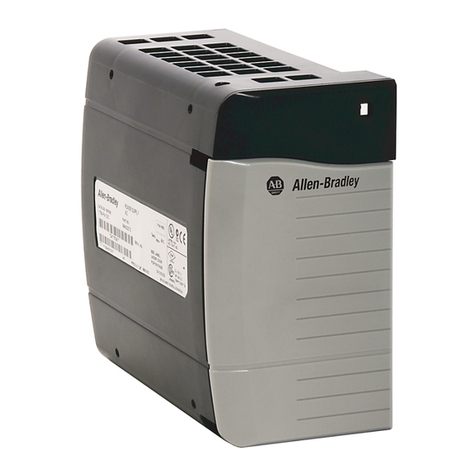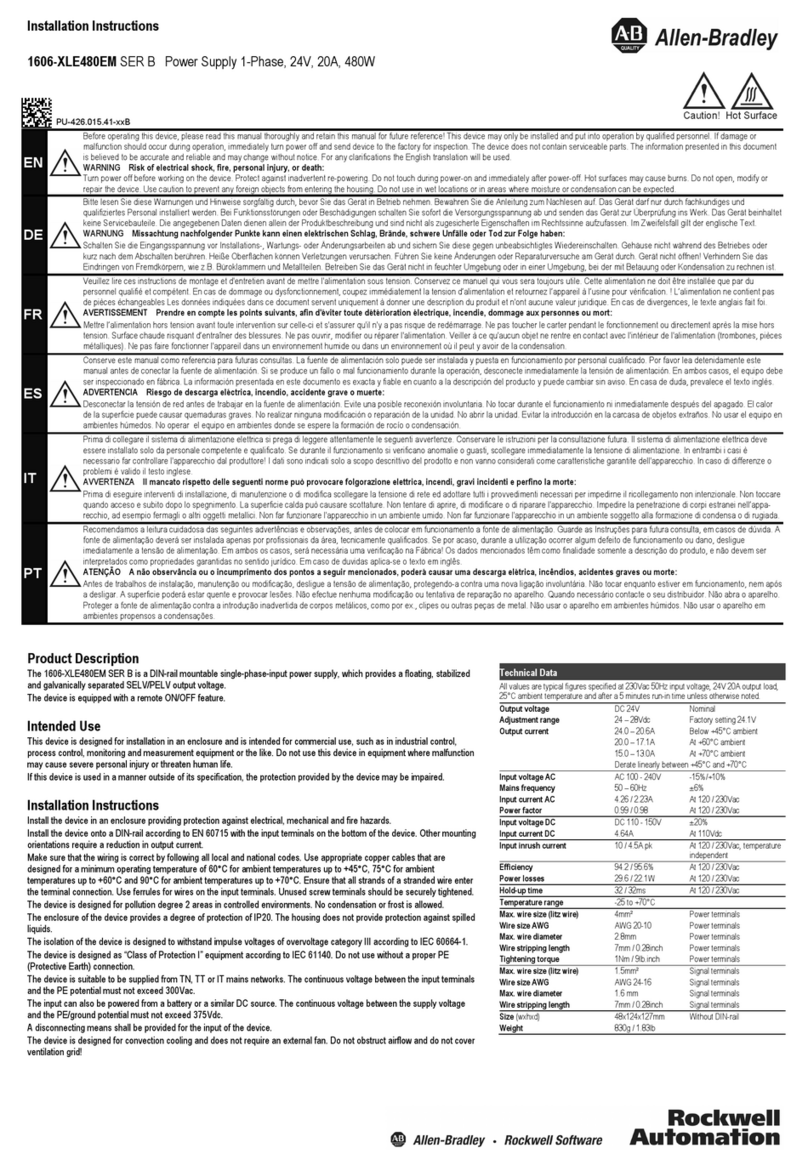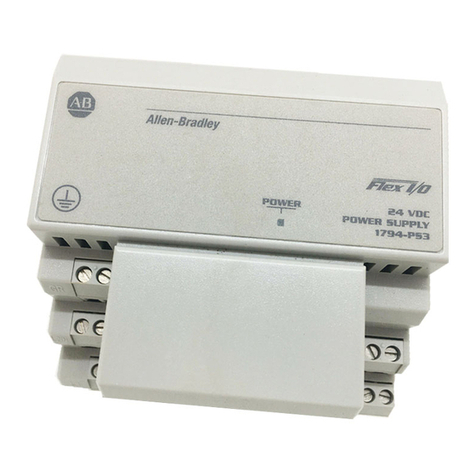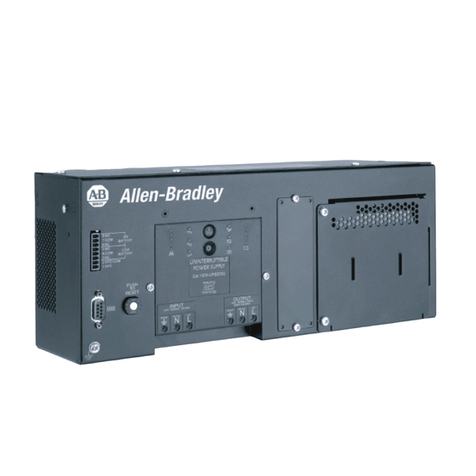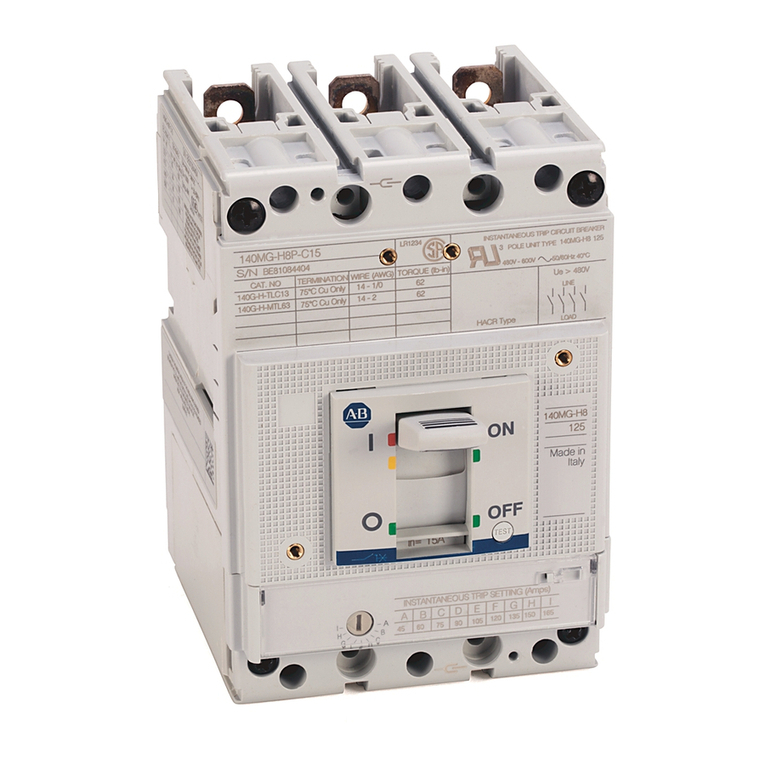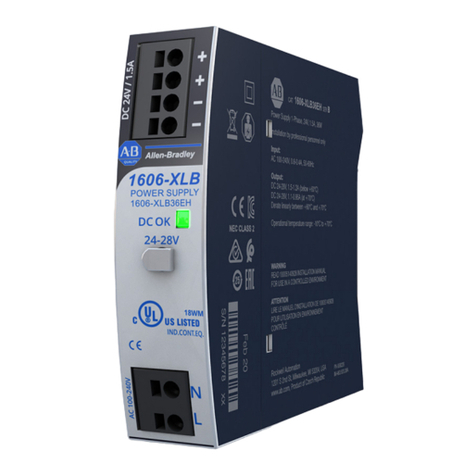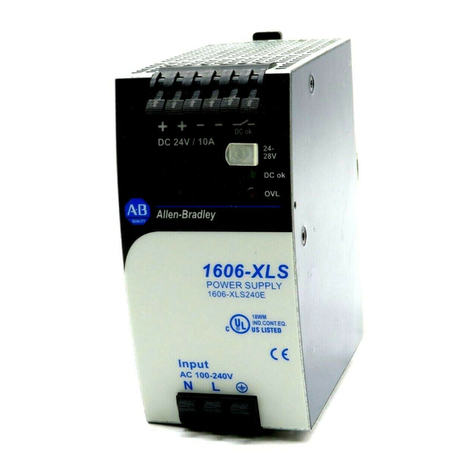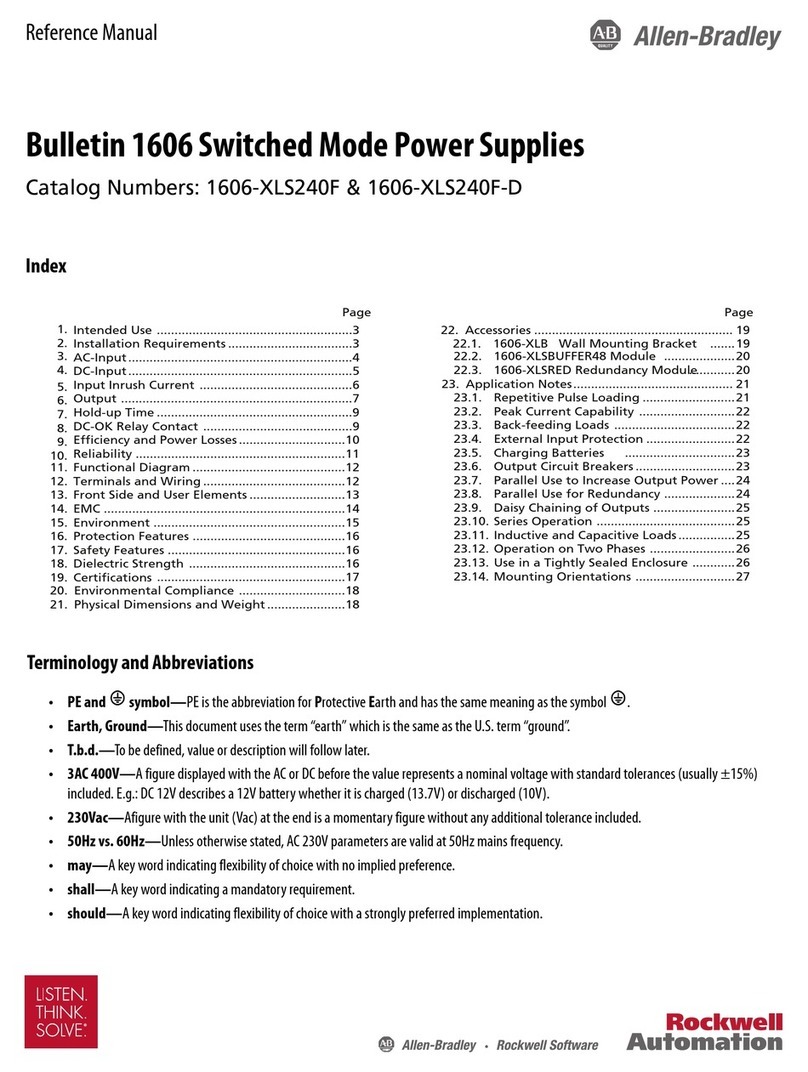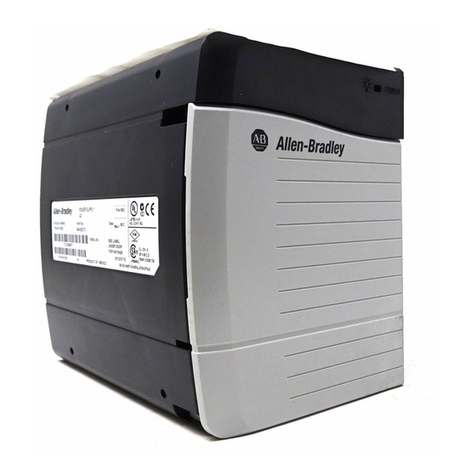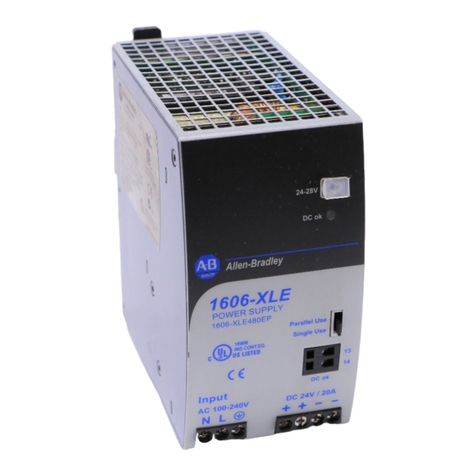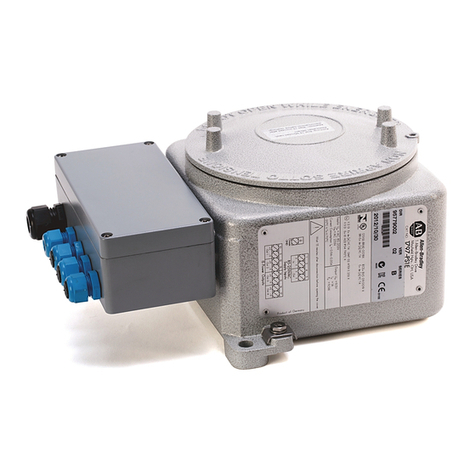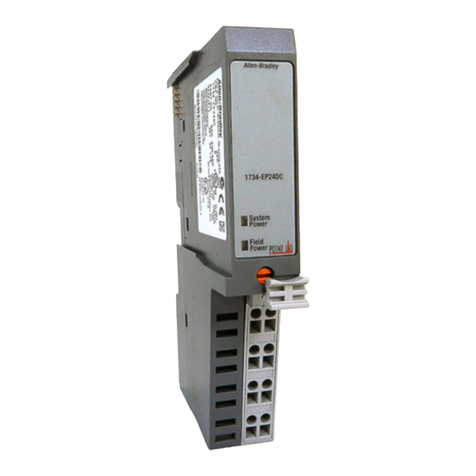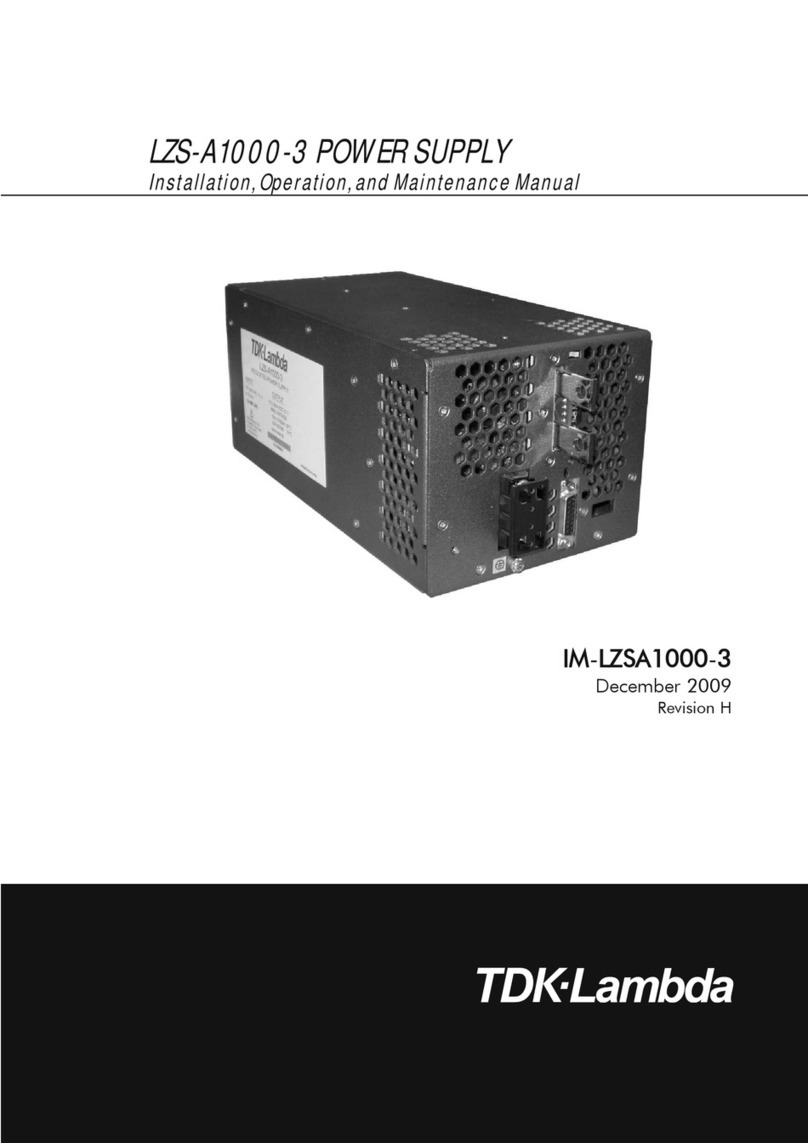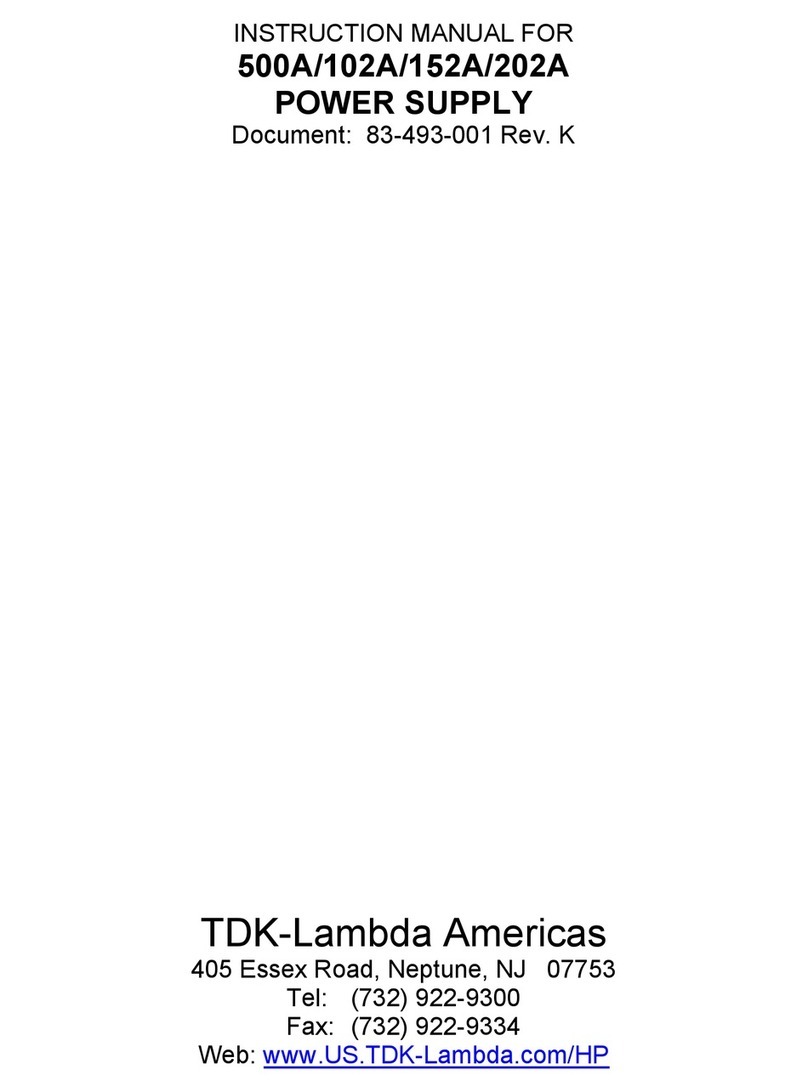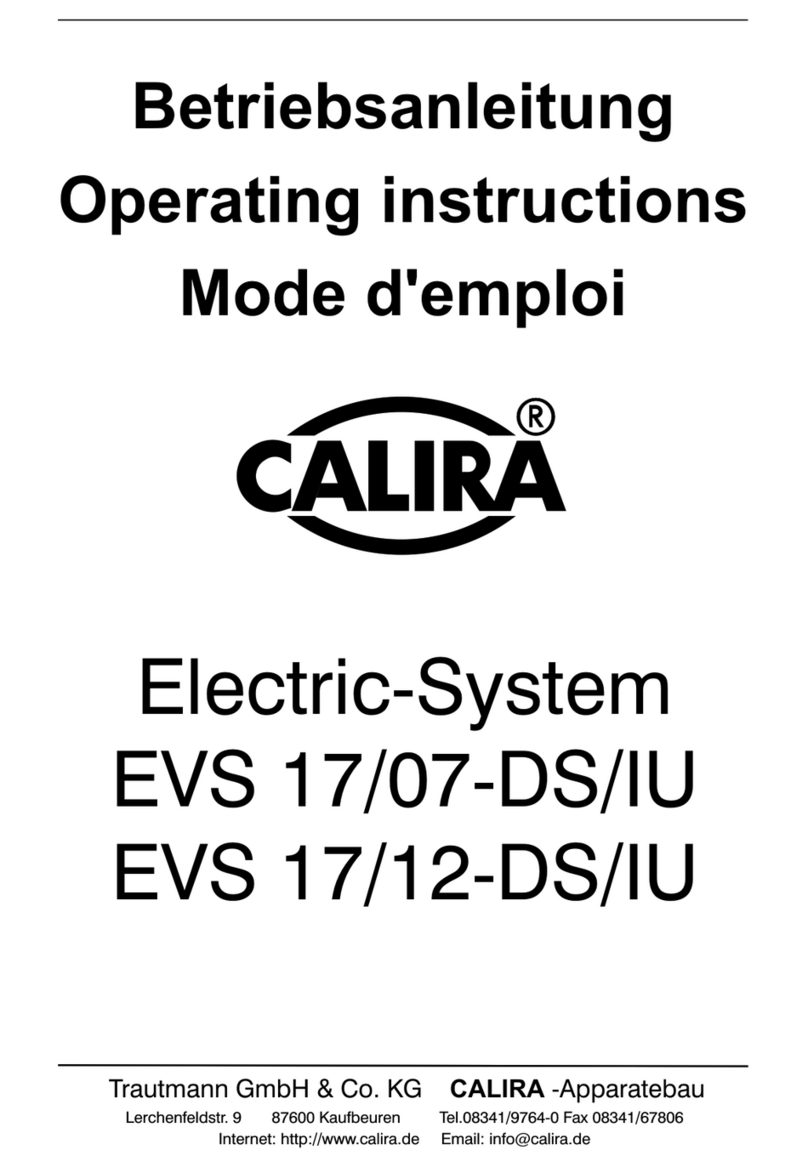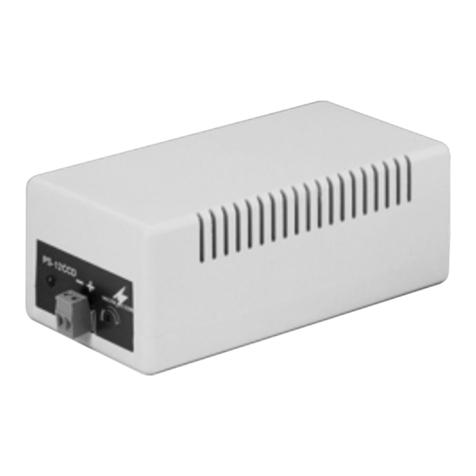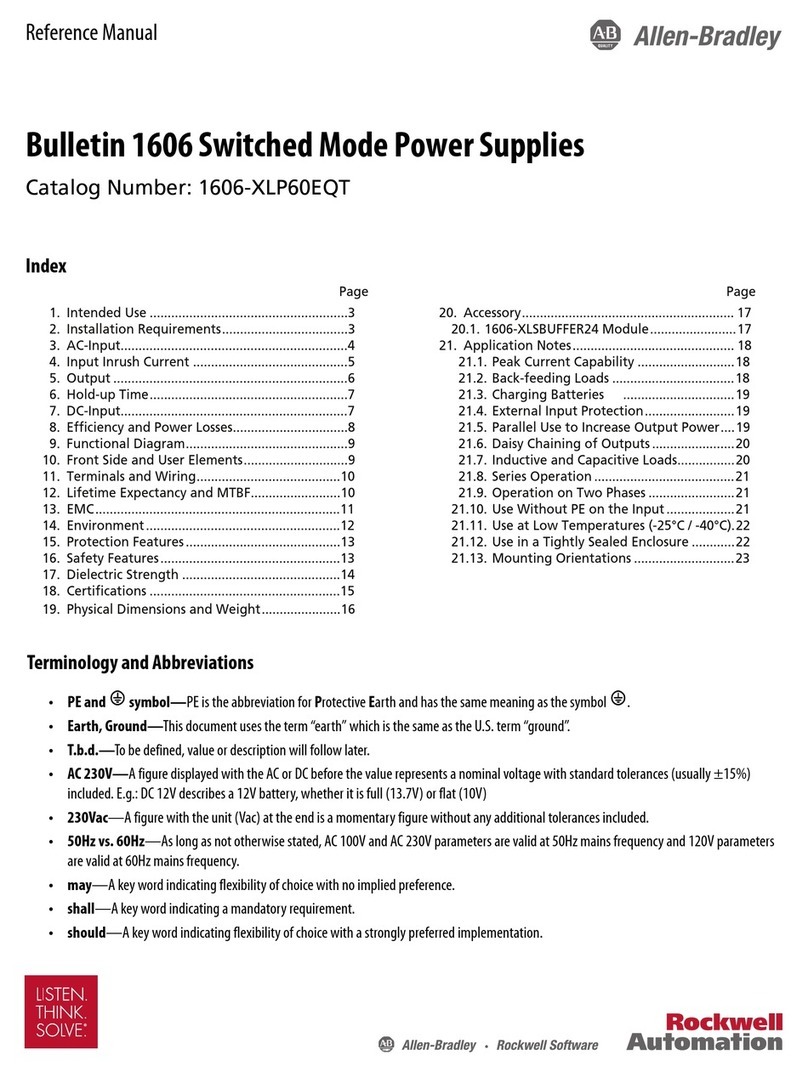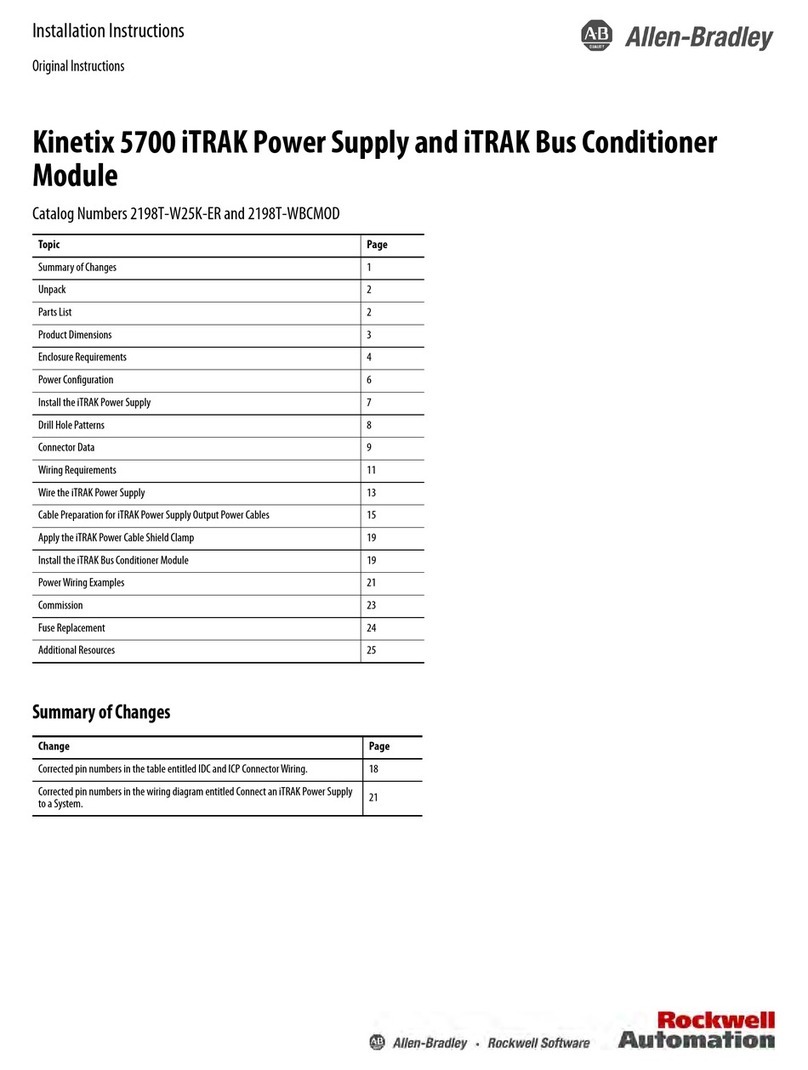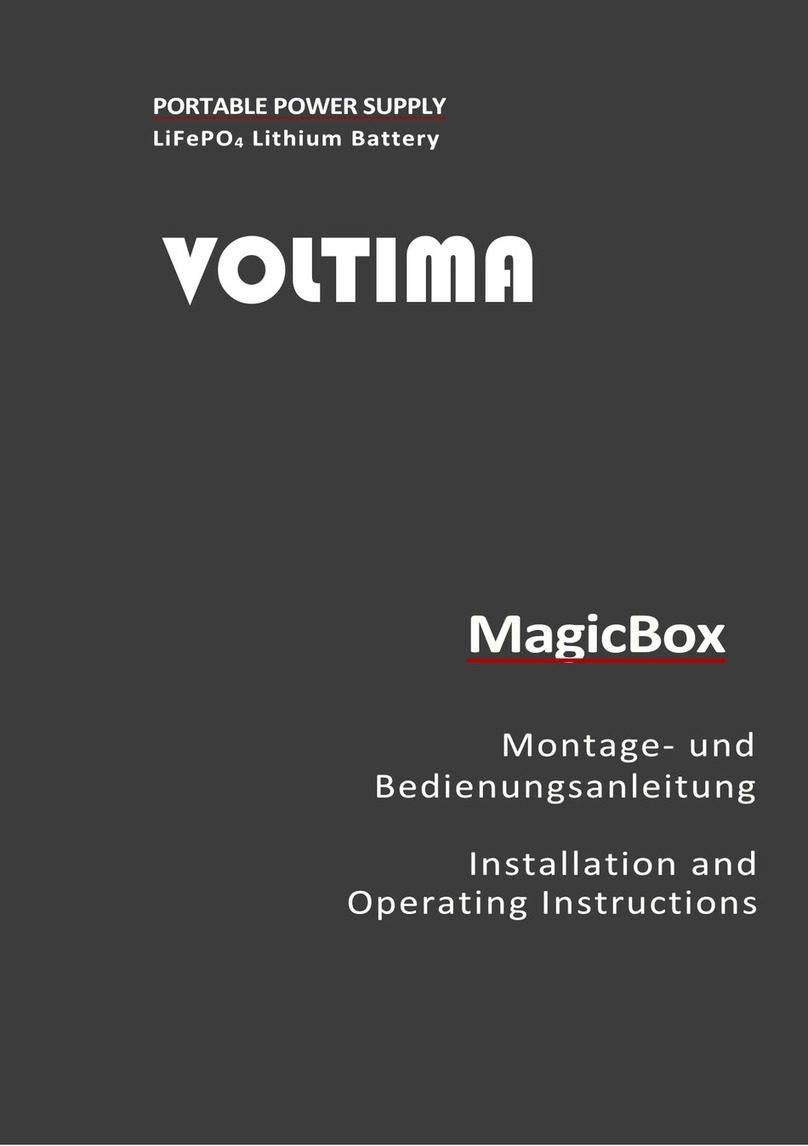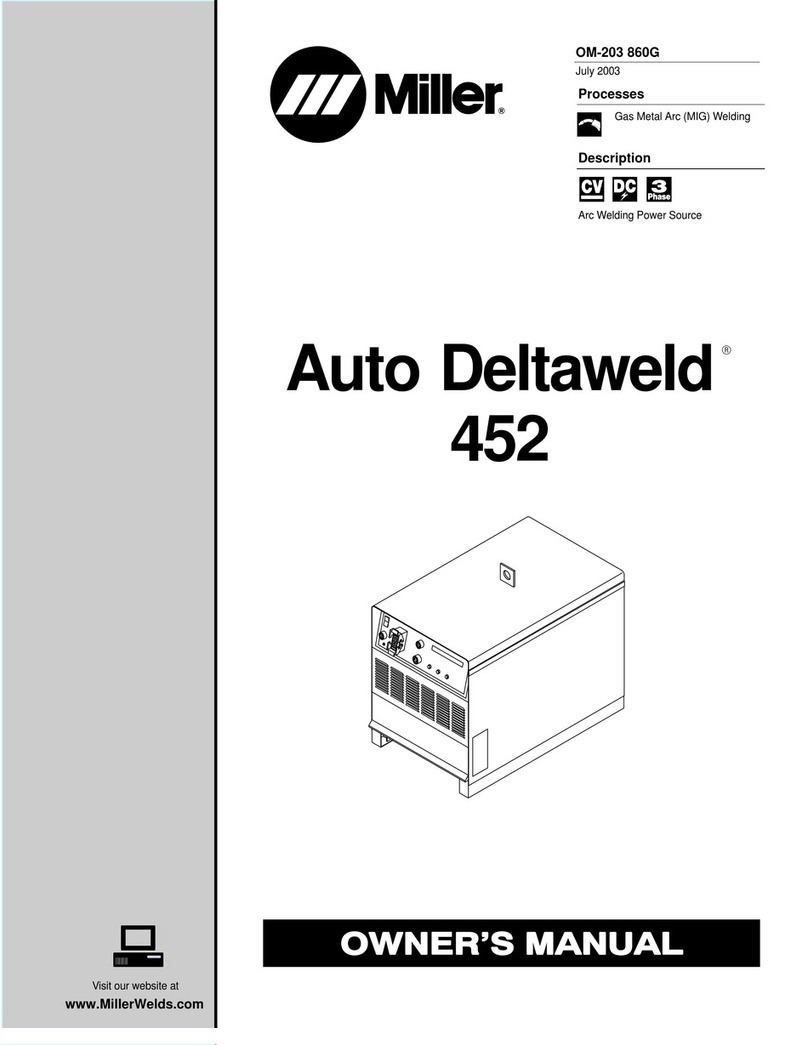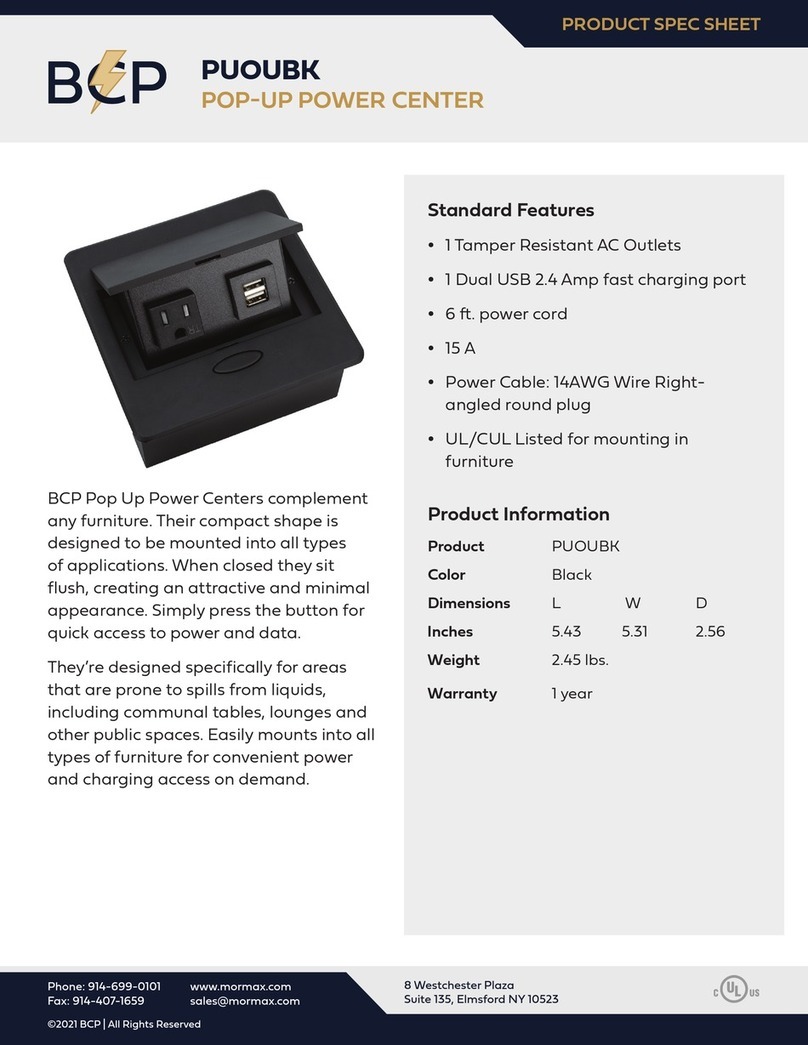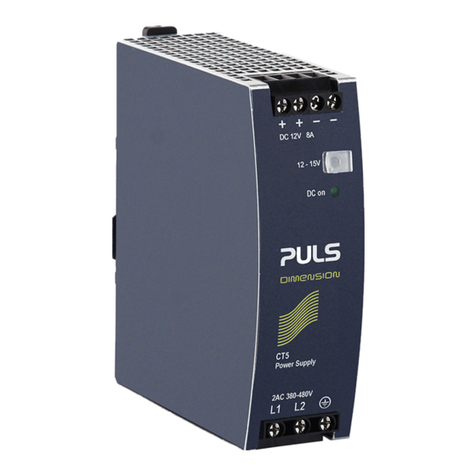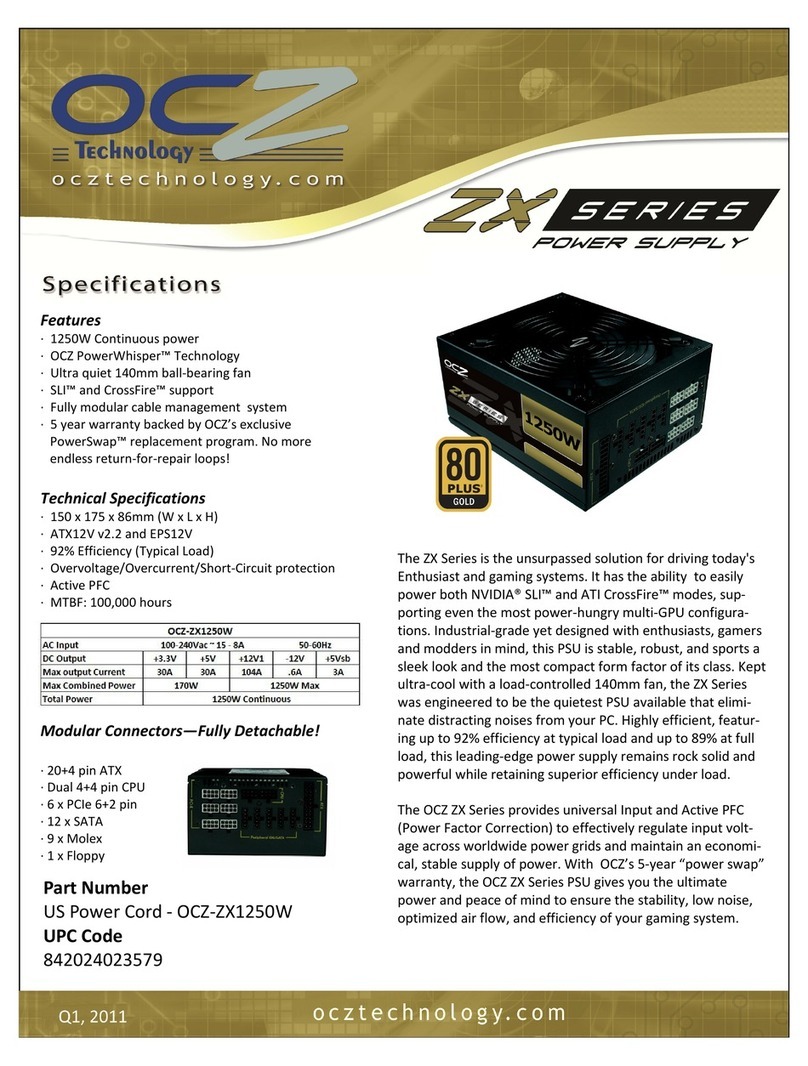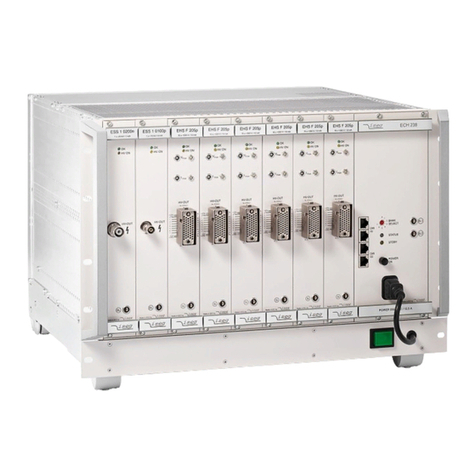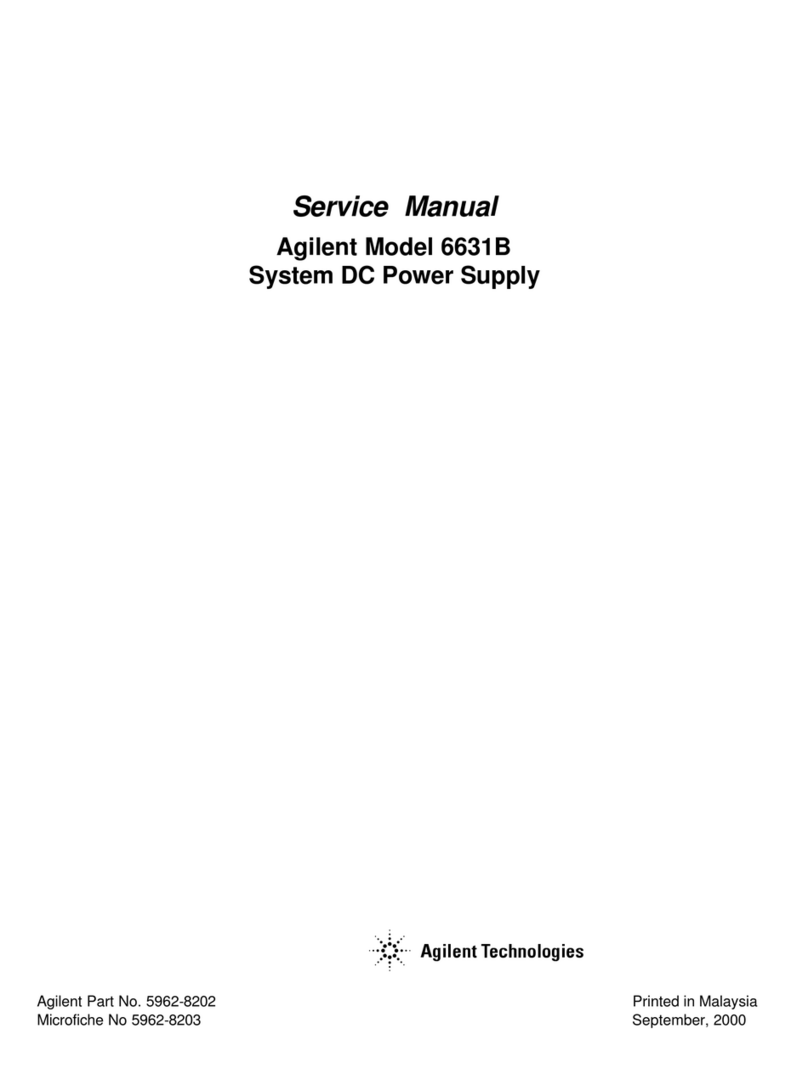
10 Rockwell Automation Publication 1606-RM110A-EN-P - July 2020
Redundancy Power Supply - 24V, 10 A, 240 W, Single-phase Input
Output
The output provides a SELV/PELV/ES1 rated voltage, which is galvanically
isolated from the input voltage. The output of the devices includes a
decoupling MOSFET for building 1+1 or n+1 redundant power supply systems.
The device is designed to supply any kind of loads, including capacitive and
inductive loads. If extreme large capacitors, such as EDLCs (electric double
layer capacitors or “UltraCaps”) with a capacitance > 1F are connected to the
output, the unit might charge the capacitor in the HiccupPLUS mode.
The device is featured with a “soft output regulation characteristic” to achieve
current share between multiple devices when they are connected in parallel.
The “soft output regulation characteristic” regulates the output voltage in such
a manner that the voltage at no load is approximately 4% higher than at
nominal load.
Output voltage Nom DC 24V 23.8…25.2V
Adjustment range See Adjusting the Output Voltage on page 26
Factory settings 24.1V ±0.2%, at 10 A, cold unit (results to Typ 23.9V±0.2% at 24
A and Typ 25.1V±0.2% at no load)
Line regulation Max 10 mV 85…300V AC
Load regulation Typ 1000 mV Static value, 0 A --> 10 A; see Figure 8.
Ripple and noise Max 50 mVpp 20 Hz to 20 MHz, 50 Ω
Output current
Nom 12 A(1)
(1) This current is also available for temperatures up to +70 °C with a duty cycle of 10% and/ or not longer than 1 minute every 10
minutes.
Below 45 °C ambient temperature, see Figure 23.
Nom 10 A At 60 °C ambient temperature, see Figure 23.
Nom 7.5 A At 70 °C ambient temperature, see Figure 23.
Fuse breaking(2)
(2) The fuse braking current is an enhanced transient current which helps to start heavy loads or to trip fuses on faulty output
branches. The output voltage stays above 20V. See Peak Current Capability on page 25 for additional measurements.
Typ 30 A Up to 12 ms once every 5 seconds, see Figure 10.
Overload protection Included Electronically helps protected against overload, no-load,
and short-circuits. In a protection event, audible noise
can occur.
Overload behavior Continuouscurrent Output voltage >13V DC, see Figure 8.
Intermittentcurrent(3)
(3) At heavy overloads (when output voltage falls below 13V), the power supply delivers continuous output current for 2 s. After
this, the output is switched off for approx. 18s before a new start attempt is automatically performed. This cycle is repeated
as long as the overload exists. If the overload has been cleared, the device will operate normally. See Figure 8.
Output voltage <13V DC, see Figure 8.
Overload/ short-
circuit current
Max 15.5 A Continuous current, see Figure 8.
Typ 14 A Intermittent current peak value for Typ 2 s Load
impedance 10mΩ, see Figure 9.
Discharge current of output capacitors is not included
Max 5 A Intermittent current average value (R.M.S.) Load
impedance 10mΩ, see Figure 9.
Output capacitance Typ 4400 µF Included inside the power supply
Back-feeding loads Max 35V
The unit is resistant and does not show malfunctioning
when a load feeds back voltage to the power supply. It
does not matter whether the power supply is on or off.
The absorbing energy can be calculated according to the
built-in large sized output capacitor.
